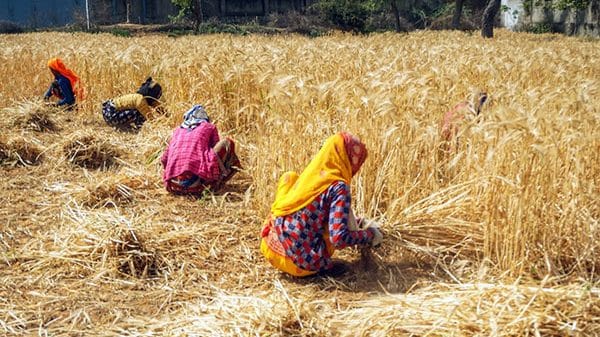Now that the Pradhan Mantri Garib Kalyan Anna Yojana has ended, the Narendra Modi government can better plan for managing the wheat stock in the run-up to the Lok Sabha election in 2024. It shouldn’t want a repeat of last year’s wheat procurement story: Due to unusually high temperatures and heatwaves in March and April 2022, the yield suffered a loss and the procurement came down to 18.8 million tonnes from 43.4 million tonnes in FY 2021-22.
The government banned wheat export in May and substituted its allotment with rice in Bihar, Delhi, Gujarat, Jharkhand, Maharashtra, Madhya Pradesh, Odisha, Tamil Nadu, Uttar Pradesh, and West Bengal. At the pan-India level, the allocation of wheat under the National Food Security Act 2013 (NFSA) was reduced from 240 lakh tonnes to 180 lakh tonnes.
It is estimated that wheat stock on 1 January 2023 was 171.70 lakh tonnes. For three months from January to March, the monthly allocation under the NFSA/Public Distribution System (PDS) is 14.30 lakh tonnes.
Also read: Punjab, Haryana can hedge India against climate-induced food shortages. See data
Wheat offtake—then to now
It is rather odd that up till November 2022, for the poorest Antyodaya Anna Yojana (AAY) families, the offtake was about 80 per cent of allocation, while for the slightly better-off families classified as priority households (PHH), it was 89 per cent. The total offtake under the NFSA was 88 per cent of allocation.
Due to the discontinuation of PMGKAY, we can expect a higher wheat offtake of 90 per cent in the last quarter of FY 2022-23. The allocation of wheat for other welfare schemes this year is negligible. So, the total offtake may be about 39 lakh tonnes.
If the government does not release any wheat under the Open Market Sale Scheme (OMSS), the wheat stock on 1 April 2023 may go up to 131 21 lakh tonnes. This will be higher than the buffer norm of 74.6 lakh tonnes.
In a year, the central government requires at least 240 lakh tonnes of wheat for NFSA and another 20 lakh tonnes for other welfare schemes. For procuring this minimum stock, the government will have to take some measures between now and end of March.
The new crop of wheat will start reaching the markets by the first week of April. Wheat prices in the open market range between Rs 2,800 to Rs 2,900 per quintal. The Minimum Support Price (MSP) for wheat for the rabi marketing season 2023-24 is Rs 2,125 per quintal. If the government has to meet its target of wheat procurement, the open market prices need to come down to the level of the MSP.
Many would find it ironic that the government is aiming to reduce wheat prices by about 24 per cent two months from now. So, there is very little likelihood of the lifting of the ban on wheat export.
Also read: World is worried about India banning rice exports, but no threat to food security yet
Govt must decide on export ban
In the past, governments have used OMSS to cool down market prices. Wheat inflation is currently more than 20 per cent and retail prices reflect that.
In Punjab and Haryana, the arrivals are almost complete in about 25 to 30 days for the wheat stock to arrive in Agricultural Produce & Livestock Market Committees (APMCs), also known as mandis. About 130 lakh tonnes and 80 lakh tonnes of wheat from these two states is procured in this period. Therefore, due to heavy arrivals, the price of wheat in the open market falls. Another major reason for the fall in prices would be the absence of private players in APMCs in these two major wheat-producing states. Private traders prefer to buy wheat from other states as the purchaser must pay a market fee, rural development fee (RDF), and commission to arhatiyas (the so-called middlemen) amounting to 8.5 per cent in Punjab and 6.5 per cent in Haryana. The two states had reduced the market fee and RDF when the 2020 farm laws were in force. However, they were restored to previous levels later, when the laws were repealed.
If the government releases 20 lakh tonnes of wheat in January and February under OMSS, the fall in open market wheat prices could come sooner.
The colder weather in the northwestern states of Punjab, Haryana, and Uttar Pradesh is good for the wheat crop. Sown area under wheat is about 1 per cent higher than last year. If there is no climatic adversity, we may see wheat production of about 112 million tonnes.
If the government meets its wheat procurement target and open market prices of wheat cool down to the level of MSP, it may consider permitting wheat export as the purchases by the private players can keep the market prices above MSP.
A decision to allow export should be expected only by the end of April 2023.
Siraj Hussain is a former Union Agriculture Secretary. Views are personal.
(Edited by Humra Laeeq)






